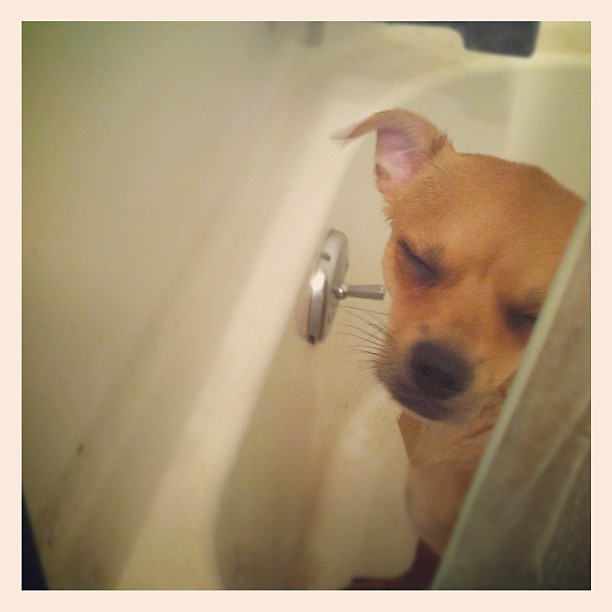 |
| Photo by Jamie McCaffrey |
Also known as seizures, epilepsy disorders normally occur from viral infections, and environmental factors as well. Even though an inaccessible seizure isn’t always a problem, dogs that have recurring seizures should never be bred. Vets can recommend medicines that control recurring seizures, although medicine isn’t always effective. Although epilepsy doesn’t affect the health of a Golden Retriever, it does have an effect on breeding. You can never tell if it is indeed heredity, therefore breeding is pretty much out of the question - to avoid passing it on to the litter.
Skin allergies
Skin allergy is the most common medical issue with Golden Retrievers. Skin allergy is normally the result of allergens such as flea bites, dust, airborne pollen, food, and even mold. Symptoms will vary, although they can include bits, scratching, licking, and even ear infections. Diet is extremely important here, as it can help to prevent a lot of these problems. If you consult with your vet, you can more than likely eliminate the risks your pet has of getting a skin allergy.
Hypothyroidism
Hypothyroidism is a condition that causes the thyroid gland to malfunction. Golden Retrievers that are affected by this disease will normally show such symptoms as coat problems or obesity. This medical problem can also result in a lack of fertility as well. A lack of fertility can be a big problem for breeders, as it makes it very hard for the affected Golden Retriever to breed.
The treatment of hypothyroidism involves taking the oral supplement for hypothyroidism on a daily basis. Once it has been treated successfully, the prognosis will appear to be normal and the dog will have a normal, healthy lifespan, providing there are no other medical problems. This condition is somewhat common with Golden Retrievers and can be diagnosed by your vet.
Some Golden’s who suffer from hypothyroid problems will have seizures, although this will stop once they go on the oral treatment medicine. Even though the hypothyroid condition isn’t associated with epilepsy, you should monitor your dog to be on the safe side. You don’t want to take any chances with your dog coming down with epilepsy, which is why you should always have your vet do routine checks.
Even though medical problems are somewhat common with Golden Retrievers, you can help to prevent them from making sure your dog is healthy. If you do your part and make sure that you treat your Golden well, you shouldn’t have anything to worry about. Golden Retrievers are generally healthy dogs, although they can get ill from time to time. If you take your dog to the vet and get him treated as soon as he gets sick - he’ll be better and back to his normal self in no time at all.













